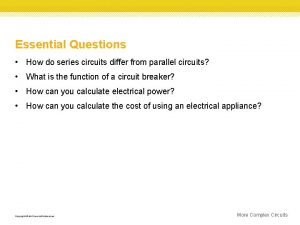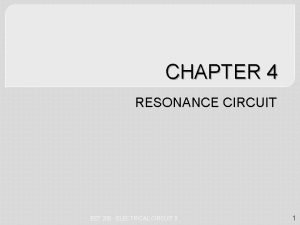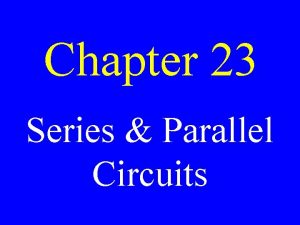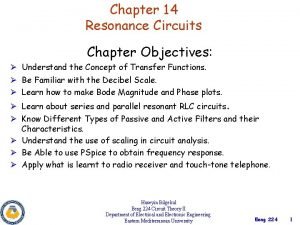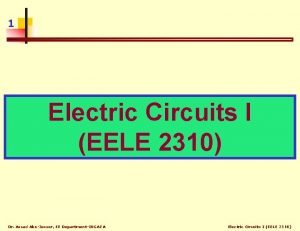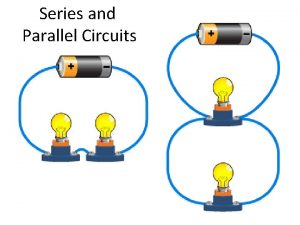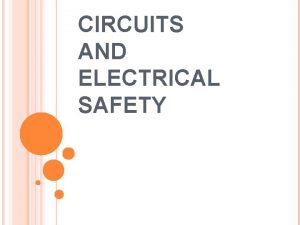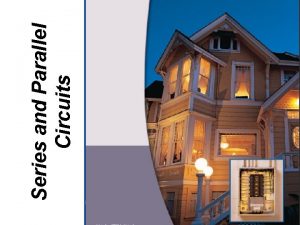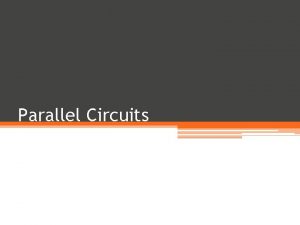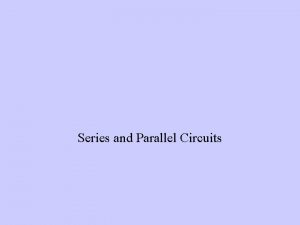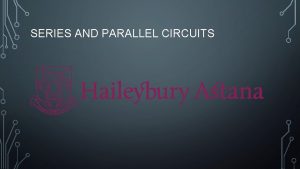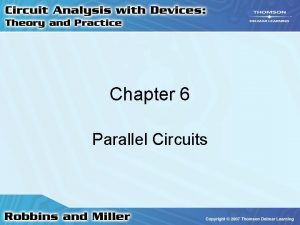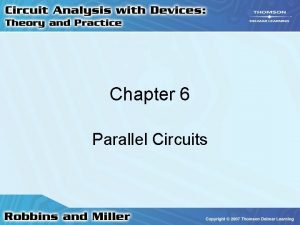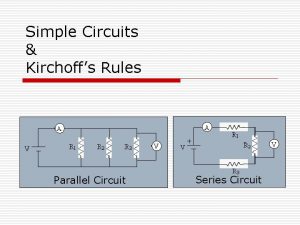SERIES PARALLEL CIRCUITS SERIES CIRCUIT There is only













- Slides: 13

SERIES & PARALLEL CIRCUITS



SERIES CIRCUIT: -There is only ONE PATH for the electrons to take between any two points in the circuit. *There will be no alternative route. -Has more than one RESISTOR. Since there is only one path for the current to travel, the current through each of the resistors is the same. *Resistors are components that are used to control the amount of current flowing in a circuit.

PARALLEL CIRCUITS: -Two or more components are connected between the same two points. - Has more than one resistor and gets its name form having multiple paths to move along. * Charges can move through any of the several paths. If one of the items in the circuit is broken, then no charge will move through that path. But other paths will continue to have charges flow through them.


RECAP! SERIES CIRCUIT PARALLEL CIRCUIT DESCRIPTION If one the items in the circuit is broken, then no charge will move through the circuit because there is only ONE PATH. If one of the items in the circuit is broken then no charge will move through that path, but OTHER PATHS will continue to have charges flow through them. RESISTOR As more resistors are added, the overall current in the circuit decreases. As the number of resistors increases, the overall current also increases.

EQUIVALENT RESISTANCE -Is the amount of resistance that a single resistor would need in order to equal the overall effect of the collection of resistors that are present in the circuit. RESISTORS IN SERIES: Two resistances are connected in series if all the current from one resistor must flow through the second; there is no alternative route.

Equivalent resistance: From conservation of charge: I 1 = I 2 = I where I is the current through the combination. From conservation of energy: V 1 + V 2 = V where V is the potential difference across both resistors. The two resistors can be replaced by a single resistor with the equivalent resistance For more than two resistors, Req = R 1 + R 2 + R 3 +. . .

RESISTORS IN PARALLEL: - Two resistors are connected in parallel if they are joined at both ends such that the potential difference across both resistors is the same. The current splits, flows through the two resistors, then comes back together with no alternate path.

Equivalent resistance: From conservation of charge: I 1 + I 2 = I From conservation of energy: V 1 = V 2 = V The two resistors can be replaced by a single resistor with the equivalent resistance Req: For more than two resistors:

RECAP! SERIES CIRCUIT PARALLEL CIRCUIT The total resistance of the circuit, also called effective resistance is equal to the sum of the individual resistances. The inverse of the total resistance of the circuit, is equal to the sum of the inverses of the individual resistances. R = R 1 + R 2 + R 3 + … 1/R = 1/R 1 + 1/R 2 + 1/R 3 + …

ELECTRIC POWER AND ENERGY Electric Power: -Represents the rate at which energy is converted from the electrical energy of the moving charges to some other form. - The SI unit of power is watt. Electric Energy: -Represents the presence and flow of an electric charge. The energy portion of electricity is found in a variety of phenomena such as static electricity, electromagnetic fields and lightning. -Consumption of electrical energy is measured by Watt x Hour (Wxh) * 1 Wh = 3600 joule = 859. 8 calorie
 Advantages of parallel circuit over series circuit
Advantages of parallel circuit over series circuit Series vs paralell
Series vs paralell Parallel circuit vs series circuit
Parallel circuit vs series circuit Parallel circuit vs series circuit
Parallel circuit vs series circuit Similarities of series and parallel circuits
Similarities of series and parallel circuits Difference between parallel and series connection
Difference between parallel and series connection Series circuit questions
Series circuit questions Series and parallel circuits
Series and parallel circuits Chapter 23 series and parallel circuits study guide answers
Chapter 23 series and parallel circuits study guide answers Series and parallel circuits
Series and parallel circuits Lesson 8: comparing series and parallel rlc circuits
Lesson 8: comparing series and parallel rlc circuits How to find req in a series circuit
How to find req in a series circuit Bill nye friction worksheet
Bill nye friction worksheet Every circuit must have
Every circuit must have






